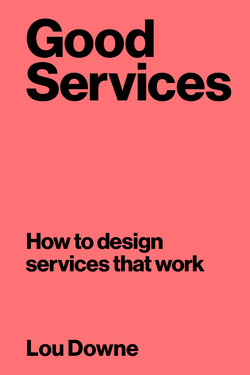Читать книгу Good Services - Lou Downe - Страница 18
На сайте Литреса книга снята с продажи.
ОглавлениеIn 1971, Victor Papanek wrote: ‘There are professions more harmful than industrial design, but only a few’. At the time, he was right. Industrial design was and still is responsible for the mountains of fridges filling our landfill sites, our addiction to motor transport and fossil fuels and our love of disposable food packaging. But perhaps even Papanek couldn’t have foreseen the damage that could be done by bad services today.
The problems that bad services cause are vast – and they don’t just have a negative impact on users, but cause problems to businesses and society as a whole. Unlike the problems with the products we use though, problems with services are often hard for us to identify and even harder to attribute.
In the UK government, about 80% of the cost of government is spent on services. Not surprising, given it is the oldest and largest service provider in the UK. Of the 10,000 recorded services (not all are known), some are over 200 years old, with the oldest recorded dating back to Henry VIII. What is more surprising perhaps is that up to 60% of the cost of these services is spent on service failure – phone calls asking government how to do something, or pieces of casework where forms aren’t filled in correctly.
Spending on public services amounts to roughly a third of UK GDP, meaning that bad service design is one of the biggest unnecessary costs to UK taxpayers. And yet, it’s not simply users that are paying the price for bad service design, it’s our organisations too. We are footing the bill for the unnecessary phone calls, the returned products, complaints or missed appointments as much as our users.
A better service for users is generally a better service for an organisation to supply. So how is it that services continue to work in this way? It isn’t because we don’t want services to be better, or that we aren’t aware that they need to work for users (you’re reading this book, after all!). The answer is that services, unlike almost anything else that has an equivalent effect on our lives, have remained unrefereed and unscrutinised.
We have a collective blindness for services. They are the gaps between things, and so not only do we fail to see them, but we fail to recognise when they aren’t working. They are often provided by multiple organisations, or parts of an organisation, so their cost and the negative effect they have on the world is more difficult to track than the cost of failing technology.
Service failure is hidden in wrongly worded questions, broken links and poorly trained staff; in emails not sent, phone lines that have been closed or inaccessible PDFs. In short, it’s hidden in the small, everyday failures of our services to meet the very basic needs our users have – to be able to do the thing they set out to do.
Many of the problems with our services are not as obvious to spot as the problems with student loans or credit card sign-up in the US – but they are no less impactful in our users’ lives. Each time we decide to incentivise our staff, change a policy, open or close a channel or buy a new piece of internal technology, we make a decision that will have an impact on the quality of the service for a user. We need to turn these everyday decisions into conscious design decisions, with the full awareness of the effect they will have on the service we provide, but we can only do that if we know what we want to achieve – what a good service is and what it isn’t.
Each of the 15 principles in this book reflects one aspect of how to achieve ‘good’ for your users, your organisation and the world as a whole, but above all, it’s crucial to remember that making something good for users, as we should all strive to do, is completely dependent on making something good for your organisation and for the world as a whole.
It’s almost impossible to build a service that is good for the user if it’s not good for your organisation and, likewise, if that thing isn’t sustainable or doesn’t have a positive impact on the world, it’s not likely to be able to deliver long-term value for you or your users.
The principles in this book will give you a starting point in joining these three areas so that they work together. They aren’t a complete list, and you will find your own, but I hope but they are a place to start.
